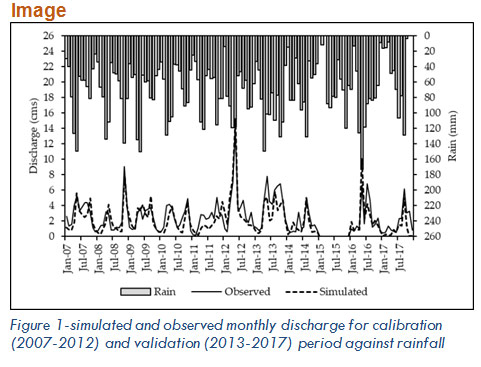Yasser Abbasi
University of Twente, Netherlands
Title: Watershed modeling of sediment and chemical transport in the Malewa river basin, Kenya
Biography
Biography: Yasser Abbasi
Abstract
The sediment mobilization and transport behavior and agrochemicals loading of the Malewa river draining into lake Naivasha, as a major fresh water resource, is a critical issue in relation to water quality and ecosystems in the watershed. In this study, ArcSWAT v. 2012 was used to estimate discharge, sediment and pesticides (i.e. Lindane, Methoxychlor and Endosulfan) transport in the Malewa river basin. The model was calibrated and validated in monthly steps using SWAT-CUP tool in which the sequential uncertainty fitting version 2 (SUFI-2) algorithm was used to perform the calibration-validation and sensitivity analysis. SWAT was calibrated using water level gauge data, as well as DTS-12 digital turbidity sensor for suspended sediment transport. Pesticide residues were sampled at three locations using passive sampling technique and determined using laboratory gas chromatography. The sensitivity analysis of the discharge-related parameters indicated 15 sensitive parameters among which curve number (CN2) was the most sensitive one. The results of calibration (2007-2012) showed that the monthly simulation had satisfactory results with a R2 of 0.74 and NSE of 0.70. The validation (2013-2017) of the discharge simulation also showed R2=0.69 and NSE=0.59 for monthly simulations. The results of the model calibration for monthly sediments also showed satisfying results based on R2 and NSE factors as their amounts were both more than 0.90. Among the pesticides-related parameters, application efficiency (AP_EF) and pesticides half-life in soil (HLIFE-S) were the most sensitive ones in calibrating the model. Correlation between the simulated and measured pesticides concentrations at upper Malewa and down Malewa showed that although the model mostly overestimated the pesticides loading, there was a suitable trend between measured and simulated results. The peak of pesticides concentration happened during May to mid-July. Finally, the results of this study demonstrated the capability of SWAT model for evaluation of upstream to downstream suspended sediment and pesticides transport.



